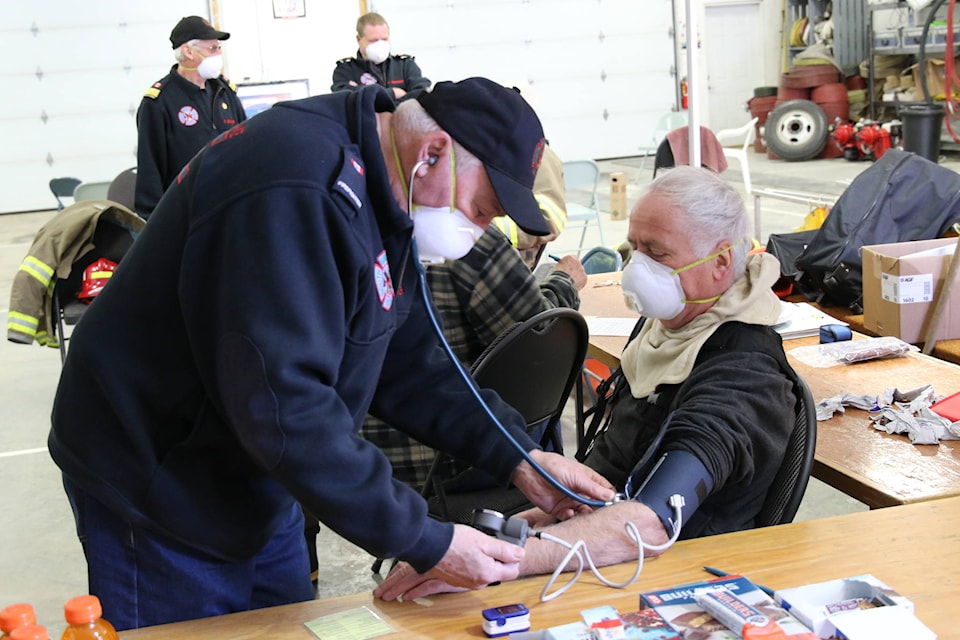South Green Lake Volunteer Fire Department (SGLVFD) members turned out in force for a Rehabilitation refresher course.
The course is one of the core Playbook modules local firefighters must take every two years and “considering the age demographic (the average age is 65), it is very important to make sure our firefighters are safe and healthy during an event,” SGLVFD Fire Chief Peter McKie.
Firefighter and paramedic Steve Baker led the course, assisted by fire department trainer Del Westfall. During the training session, several firefighters put on their bunker gear and SCBAs and carried a roll of fire hose around for a few minutes. Then they went to the rehab centre, so they could experience what would happen to them in the rehab centre.
One of the key components of the course, Baker said, is having a “buddy system.” This system, already a policy at the SGLVFD, ensures that during a fire, a firefighter watches their “buddy” for signs of exhaustion, profuse sweating, and/or suffering breathing issues or tiredness. Firefighters also check their buddy’s cognitive functions to determine if they are talking as they usually would and whether their motor functions are normal, Baker said.
Baker suggested the SGLVFD also look at what’s being done in the area’s full-time fire departments to develop a Standard of Operating Guideline (SOG), stating that firefighters would rest for 10 minutes after the use of one 30-minute Self-Contained Breathing Apparatus (SCBA), during which time they would have to meet standards for heart rate, respiratory rate, blood pressure and temperature at the Rehab Centre.
Any proposals for a SOG would likely be sent to the Thompson-Nicola Regional District for clarification and/or recommendations.
“We would do the following as part of the SOG for crew health and safety: heart rate, respiratory rate, blood pressure and temperature. While this was happening, we would have the individual rehydrating and refuelling to assist the process of getting our firefighters back to their normal [baseline] targets as per the yellow cards we all have,” Baker said.
Rehab attendants would also check on the amount of air in the SCBA to ensure firefighters have full tanks before going back into action. The amount of time spent in the rehab would depend on the developed SOG. If the guidelines were not meet, the individual would stay in rehab — again a SOG needs development.
“They might need to be sent for ‘up-care’ in the medical system – British Columbia Ambulance Service (BCAS),” Baker said, or “we might report back to the Incident Command for the direction of where the individual is needed.”
If only one of the team members is ready to be released, the firefighter would collect their passport card and report to the Incident Commander for assignment and could be someone else’s buddy. The SOG would determine what happens if both the firefighter and their buddy are in rehab and both are released.
McKie noted BC Ambulance Service would be called to stand by at every fire scene and have responsibility for a rehabilitation centre. However, during an extended fire scene, “we can’t expect the Ambulance crew to stick around if they have other callouts they could be attending, so we would have to hire a [medical stand-by service company] to come to the scene.”
He added it’s the fire department’s responsibility to provide water, power bars and electrolytes for refuelling and rehydrating.
newsroom@100milefreepress.net
Like us on Facebook and follow us on Twitter.
